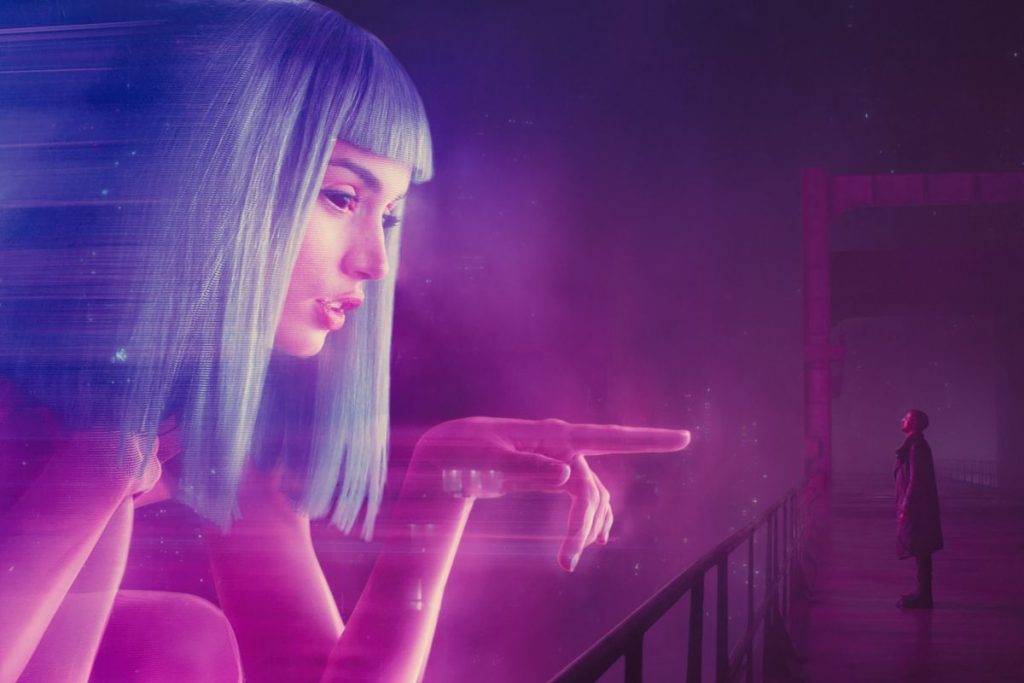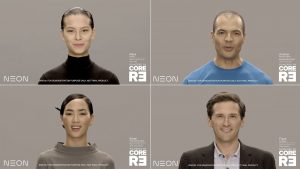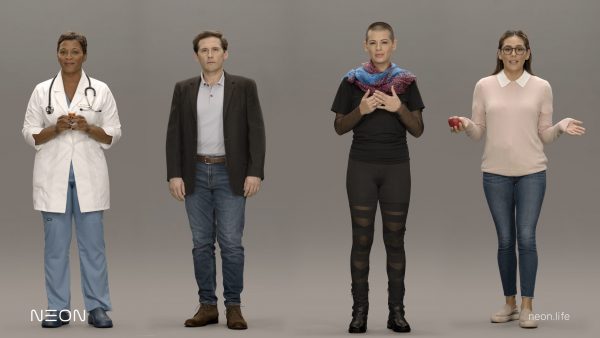CALIFORNIA, USA – January 9
NEONs will integrate with our world and serve as new links to a better future, a world where ‘humans are humans’ and ‘machines are humane’ — Pranav Mistry, CEO of NEON, President & CEO, STAR Labs
In the Westworld TV series, inspired by the film of the same name, people end up in the same room surrounded by android ‘hosts’ that are almost indistinguishable from real humans.

Similarly, in Blade Runner 2049, Officer K played by Ryan Gosling develops a relationship with his artificial intelligence (AI) hologram companion Joi.
While these sci-fi films may confound us and, at times, distort our sense of reality, a Silicon Valley-headquartered deep tech startup called Star Labs is attempting to replicate such scenarios by launching so-called “artificial humans” to be our companions, friends, and collaborators.
STAR Labs, an independent unit of Samsung Electronics, has christened these artificial humans NEONs–short for NEO humaNs.
Unveiled at CES 2020 on January 7, 2020, its creator Pranav Mistry who is also the CEO of the company, insists that unlike AI assistants, NEONs are not smart bots that provide answers. Nor are they androids or surrogates, or even copies of real humans. They are also not an interface to the Internet to ask for weather updates or to play your favorite music.
“NEON is like a new kind of life” says Mistry, “There are millions of species on our planet and we hope to add one more. NEONs will be our friends, collaborators, and companions, continually learning, evolving, and forming memories from their interactions.”
Technology that powers NEONs

Each NEON is powered by the company’s proprietary technology platform — CORE R3, where R3 stands for Reality, Realtime and Responsive. The patented CORE R3 engine, according to STAR Labs, uses Behavioral Neural Networks, Evolutionary Generative Intelligence and Computational Reality.
Generative intelligence makes it possible for machines to automatically monitor an environment and take action to maximize the chance of successfully achieving a set of defined goals.
CORE R3 can computationally create lifelike reality that is beyond normal perception to distinguish. It also makes it possible for NEONs to react and respond in real-time since it has a latency of less than a few milliseconds. CORE R3 can also connect to other domain-specific and value-added services, notes Mistry.
Going forward, SPECTRA, still in development stage, will complement CORE R3 with the spectrum of Intelligence, Learning, Emotions, and Memory, thus making NEONs fully immersional. However, we will get more insight into this at NEONWORLD 2020 slated to be held later this year.
NEON is the first venture of Samsung Technology Advanced Research (STAR) Labs, an independent unit of Samsung.
Business model
The NEON booth at CES is showcasing scenarios of NEONs from many walks of life – a yoga instructor, a banker, a K-pop star, a news anchor, a fashion model and many more. These, according to Mistry, are potential B2B and B2C applications of NEON.
“We plan to make NEONs available to business partners as well to consumers all around the world. It is too early for us to comment on the business model or pricing for NEON, but we plan to beta launch NEON in the real world with selected partners later this year. You will hear more from us soon at NEONWORLD 2020,” he says.
What’s unique about NEON?
Although Artificial Humans may borrow the likeness of or are modeled after real people, each NEON has his or her own unique personality and can show new expressions, movements, and dialogues. Businesses, according to Mistry, will be able to license or subscribe to a NEON as a service representative, financial advisor, healthcare provider, or concierge, in the near future. NEONs, he adds, will eventually work as TV anchors, spokespeople, or movie actors; or they can simply be companions and friends.

“We have always dreamed of such virtual beings in science fictions and movies.” Mistry added, “NEONs will integrate with our world and serve as new links to a better future, a world where ‘humans are humans’ and ‘machines are humane’.”
Market potential and competition
The concept of Artificial Humans is gaining ground. For instance, Russian start-up Promobot recently unveiled what it calls the world’s first android that looks just like a real person and can serve in a business capacity. Robo-C can be made to look like anyone, and comes with an AI system that has more than 100,000 speech modules, according to the company.
Similarly, Hiroshi Ishiguro and his Japanese collaborators have created a number of androids that look like humans, including one called Erica, a newscaster on Japanese TV. Sophia from Hanson Robotics is another case in point. Other examples of humanoids include Honda-owned Asimo and SoftBank Robotic Holdings Group-owned Pepper.
Further, companies like Soul Machines and Japan-headquartered DataGrid Inc., also made progress by launching digital avatars. Mistry, on his part, reiterates that he is only giving the world a glimpse of the capabilities of NEONs. “We are a technology company, first. You will see numerous ready-to-launch products and services at CES. Our idea was to take this bold step and showcase a product in the making.”
Privacy, deepfake concerns
Nevertheless, challenges abound when dealing with robots, humanoids and human avatars. NEONs will not be an exception.
For one, whenever a company generates human bodies and faces, concerns over deepfakes and cheap fakes will always rear their heads.
Second, data collection will continually raise concerns over security and privacy, given that many data security and data privacy breaches have taken place over the past few years. Third, there’s also the question of whether AI bots should be allowed to pose as humans. Fourth, there’s always the concern over the fairness of an AI algorithm.
Also, while AI is expected to unleash the next wave of digital disruption, understanding human emotion still remains a challenge for AI. In the past few years, however, increased access to data, low-cost computing power, and evolving NLP is enabling the systems to analyze human emotions.
Mistry says he is cognizant of all these concerns. STAR Labs is addressing some of these concerns. Mistry elaborates that while the looks of NEONs may be based on the likeness of a real person, “CORE R3 does not manipulate an individual scene, videos or sequences. Instead, it creates unique behaviors and interactions of NEONs in real-time that never happened before. Thus, CORE R3 creates new realities.”
Further, he points out that similar to “how all leading AI Assistants are derived from the voices of real people, our first NEONs are also visually modeled after real humans. With CORE R3 they generate new behaviors, expressions, dialogs, and emotions in realtime”. In the future, adds Mistry, CORE R3 can also “create visually-original NEONs that are not modeled after real people”.
Mistry also insists that CORE R3 ensures the integrity of data with state-of-the-art security protocols. “Privacy is at NEON’s core by design. We truly believe the wonders of technology must not compromise our privacy,” he says.
Mistry also insists that the creation of NEONs was never about replacing humans, but in fact to make us more Human. “We truly believe NEONs will integrate with our world and serve as new links to a better future, a world where ‘humans are humans’ and ‘machines are humane’.”
Mistry, though, will have to wait and see how NEONs—his new face of communication—shapes up in the minds of people and companies. While the proof of the pudding certainly lies in the eating, dissing new tech startup ideas as vapourware also may not be the best approach.
Meanwhile, keep watching this space.
